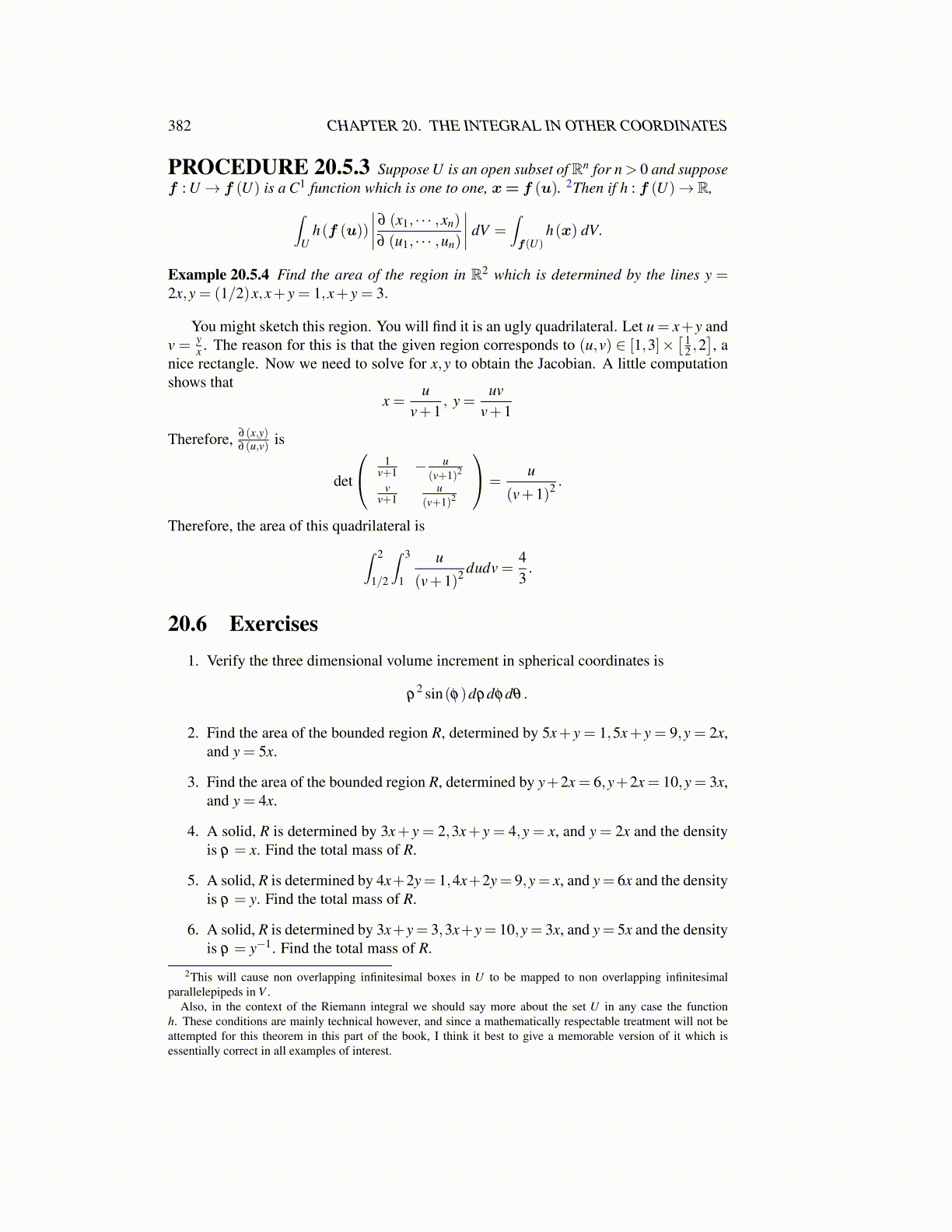
382 CHAPTER 20. THE INTEGRAL IN OTHER COORDINATES
PROCEDURE 20.5.3 Suppose U is an open subset of Rn for n > 0 and supposef : U → f (U) is a C1 function which is one to one, x= f (u). 2Then if h : f (U)→ R,∫
Uh(f (u))
∣∣∣∣ ∂ (x1, · · · ,xn)
∂ (u1, · · · ,un)
∣∣∣∣ dV =∫f(U)
h(x) dV.
Example 20.5.4 Find the area of the region in R2 which is determined by the lines y =2x,y = (1/2)x,x+ y = 1,x+ y = 3.
You might sketch this region. You will find it is an ugly quadrilateral. Let u = x+y andv = y
x . The reason for this is that the given region corresponds to (u,v) ∈ [1,3]×[ 1
2 ,2], a
nice rectangle. Now we need to solve for x,y to obtain the Jacobian. A little computationshows that
x =u
v+1, y =
uvv+1
Therefore, ∂ (x,y)∂ (u,v) is
det
1v+1 − u
(v+1)2
vv+1
u(v+1)2
=u
(v+1)2 .
Therefore, the area of this quadrilateral is∫ 2
1/2
∫ 3
1
u
(v+1)2 dudv =43.
20.6 Exercises1. Verify the three dimensional volume increment in spherical coordinates is
ρ2 sin(φ)dρdφdθ .
2. Find the area of the bounded region R, determined by 5x+ y = 1,5x+ y = 9,y = 2x,and y = 5x.
3. Find the area of the bounded region R, determined by y+2x = 6,y+2x = 10,y = 3x,and y = 4x.
4. A solid, R is determined by 3x+ y = 2,3x+ y = 4,y = x, and y = 2x and the densityis ρ = x. Find the total mass of R.
5. A solid, R is determined by 4x+2y= 1,4x+2y= 9,y= x, and y= 6x and the densityis ρ = y. Find the total mass of R.
6. A solid, R is determined by 3x+y= 3,3x+y= 10,y= 3x, and y= 5x and the densityis ρ = y−1. Find the total mass of R.
2This will cause non overlapping infinitesimal boxes in U to be mapped to non overlapping infinitesimalparallelepipeds in V .
Also, in the context of the Riemann integral we should say more about the set U in any case the functionh. These conditions are mainly technical however, and since a mathematically respectable treatment will not beattempted for this theorem in this part of the book, I think it best to give a memorable version of it which isessentially correct in all examples of interest.